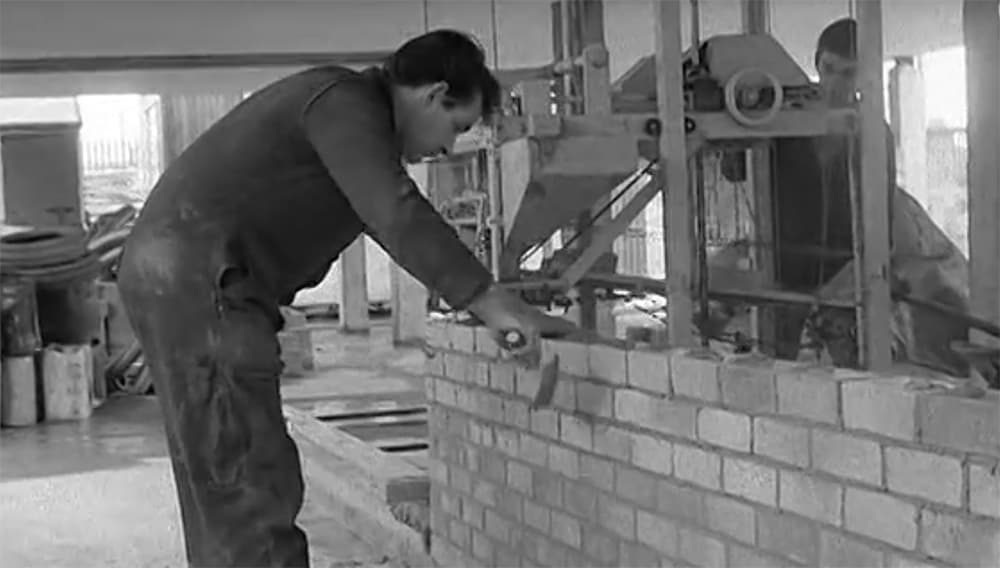The Main Principles Of Bricklayer Auckland
Wiki Article
Unknown Facts About Bricklayer Auckland
Table of ContentsWhat Does Bricklayer Auckland Do?The smart Trick of Bricklayer Auckland That Nobody is Talking AboutHow Bricklayer Auckland can Save You Time, Stress, and Money.Bricklayer Auckland for BeginnersThe smart Trick of Bricklayer Auckland That Nobody is DiscussingFacts About Bricklayer Auckland Revealed
Blocks must always be stacked on slabs; never ever stack them straight on uneven or soft ground. Do not save bricks on scaffolds or runways.Except where piled in sheds, block stacks need to never ever be greater than 7 feet high. When a heap of block reaches a height of 4 feet, it should be tapered back 1 inch in every foot of elevation over the 4-foot level. The tops of block stacks should be kept level, as well as the taper need to be preserved throughout unpiling procedures.
Structural bond refers to just how the private masonry systems interlock or tie with each other into a single structural unit. Making use of cement to adhere surrounding wythes of masonry.
The Of Bricklayer Auckland
Pattern bond describes the pattern developed by the masonry systems and mortar joints on the face of a wall surface (Bricklayer Auckland). The pattern may result from the structural bond, or it may be purely decorative as well as unassociated to the architectural bond. Number 4-4 shows the 6 standard pattern bonds in usual use today.The running bond is the most basic of the 6 patterns, containing all stretchers. Since the bond has no headers, steel ties generally create the architectural bond. The running bond is used largely in dental caries wall building and construction, brick veneer walls, as well as encountering ceramic tile walls made with extra broad cot tile.
Tests to find the quality of blocks have been examined in the previous article. Excellent bricks should not disintegrate when placed in water. This is extremely crucial as when these bricks are utilized with concrete mortar, we should thoroughly saturate them prior to laying. Just when fat lime or clay mortar is made use of or when one is compelled to use bricks that are not well scorched, this soaking rule has actually to be relaxed.
6 Easy Facts About Bricklayer Auckland Described
In all situations, blocks need to not be handled in baskets or in any type of various other mode which will certainly damage the sharpness of their sides. A layer of mortar is spread out to cover the full width of the wall for an appropriate size of the lower training course.
We push the side protruding mortar in strongly to be degree with the face of the wall surface if it is to be left unplastered. In the usual technique embraced by lots of masons, a row of blocks is first positioned on a thin layer of bed mortar leaving the cross joints empty.


Strictly this is not an excellent practice. (However, when using cement mortar of high strength, the loss of stamina as a result of violation of these guidelines may be only marginal.)The walls are raised truly plumb. All training courses are laid really straight as well as all upright joints websites genuinely upright. Vertical joints in alternate training courses need to come directly, one over the other.
Things about Bricklayer Auckland
For this function, a wood straight edge with college graduation offering a density of each block course including joint can more be utilized for assistance. For a thick wall surface, the above operation is duplicated along with both faces of the wall and the indoor filling blocks for the thick wall surface are stocked a similar way.
This operation of loading open joints is labelled flushing-up. It is incorrectly left out for numerous courses on some badly-executed jobs and only done later on (not after every training course) in an ineffective fashion. It is not a great technique and ought to be stayed clear of as it is crucial that every program ought to be purged up to the level if excellent work is needed.

An Unbiased View of Bricklayer Auckland
The mortar increasing as well as filling the vertical joints completely as well as creates an exceptionally solid as well as strong wall surface. This is recognized as larrying. For a rat trap bond work (as in the construction of dental image source caries walls), if the mortar is put carelessly on the block, some of it will drop right into the dental caries and also will certainly be squandered.The face of the brickwork shall also be cleansed of all mortar droppings, etc(ii) When scenarios render it essential to carry on a section of a structure in uneven programs, the job shall be built back (according to the bond made use of on the work) at an angle not steeper than 45 levels so as to make certain an uniform and effective bonding.
Otherwise, for faces to be plastered, finishing of the face joints ought to be performed as gone over in listed below (This is really crucial.)(iv) The wall surfaces need to be consistently increased all over not leaving any part one metre (3 feet) less than the other - Bricklayer Auckland. A day's job ought to not be greater than 1.
Things about Bricklayer Auckland
When the facework is to be later plastered or the joints alone are to be sharp, the joints should be raked while the wall surface is being developed. Bricklayer Auckland. It should be raked to a minimum depth of 12 mm by a raking tool throughout the progress of the work itself, when the mortar is still green.
If smudging or aiming is not imagined, the joints must be struck flush as well as ended up at the time of laying itself, as currently mentioned. Half-brick wall surfaces have a tendency to split unless treatment is taken in its construction. Brickwork in half-brick masonry is to be performed with stretchers in 1: 5 mortar.
Report this wiki page